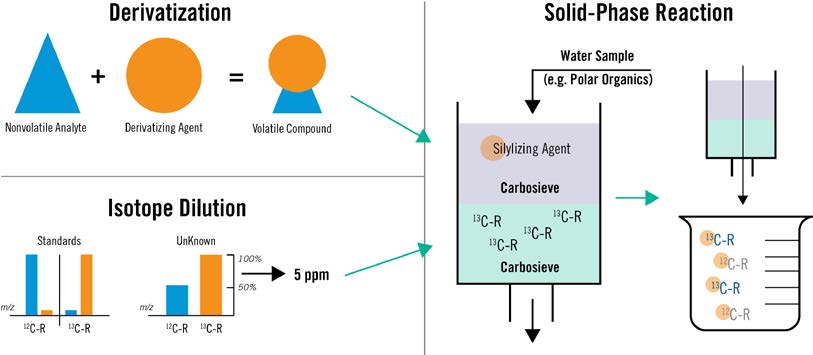Tech Briefs
Savannah River National Laboratory
Degradation-Resistant In-Field Environmental Sampling Device
Savannah River National Laboratory has developed a handheld system to fully extract polar and non-polar compounds of interest from aqueous samples.
Historically, environmental water analysis requires either a collection of aqueous samples or in-field sample preparation via a filtration through solid-phase extraction material. Current technologies tend to be cumbersome for collection and transportation, are unable to extract polar and non-polar compounds simultaneously and may lead to sample degradation between the sample-site and the laboratory.
Benefits
- Solid-phase extraction materials doped with derivatizing agents allows for simultaneous extraction of polar and non-polar compounds
- Isotopically doped layer corrects for notoriously poor performance of many derivatization reactions, as well as sample-loss and degradation allowing for longer-term sample storage
- Synergistic interaction between the doped solid-phase layers permits highly accurate laboratory analysis without sample
Applications and Industries
- Radioisotope detection, quantification, and location
- Tracking the spread and location of nuclear materials
Description
Savannah River National Laboratory has developed a disposable, portable, and cost-effective device for the collection and storage of select environmental pollutants from in-field sources that can resist weathering and analyte degradation over time. This device leverages multiple layers of solid-phase extraction materials doped with stable isotopically-labeled versions of compounds of interest to trap and store select environmental pollutants for future laboratory analysis. By trapping the pollutants alongside isotopically labeled surrogates, any weathering, degradation, or other analyte loss will be tracked and mathematically back-corrected.
The hand-held extraction devices require no pumps to fully extract the polar and non-polar compounds of interest from each sample while leaving the aqueous portion behind.

Intellectual Property
- SRS No: SRS-18-015
- Patent application has been filed with the USPTO (Serial No: 16/170,185)
- Technological Readiness level 3: Prototypes have been successfully developed and validated
Download Tech Brief
Contact Information
Savannah River National Laboratory
E-mail: partnerships@srnl.doe.gov